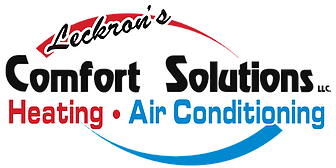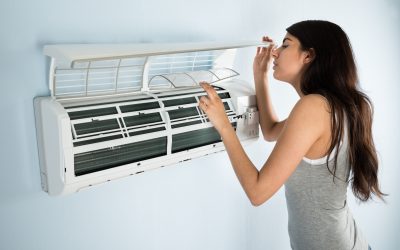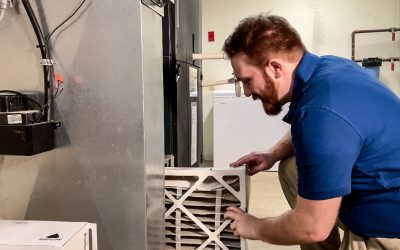When you opened the door to throw away the rotting pumpkins, winter’s chill took the opportunity to rush inside. But just because the cold weather decided to drop into your home doesn’t mean it has squatter’s rights. Kick your unwanted house guest to the curb before your energy bills skyrocket.
According to the US Department of Energy, “Electricity and natural gas prices are roughly 11% higher, and residential heating oil prices are up about 40%.” If rising heating costs aren’t enough to consider protecting your home from blistering winter temperatures, remember ineffective heating carries an environmental impact. Instead of leaving your house to impact both your finances and the environment negatively, take a few focused steps to change your home’s winter energy usage.
Conduct an Energy Audit
Homeowners want to decrease their energy usage but have no tangible idea of where to start. Energy audits answer the call. The most thorough assessment is through a professional who knows what trouble spots to inspect, what provides the maximum return on your time and investment, and what is not an actual issue.
Furthermore, a professional energy audit ensures you remain compliant to take advantage of home energy tax savings. To maximize the impact of an audit, gather a list of trouble spots or cold areas of your home before your assessor arrives.
When prepping for a professional audit, make sure someone is home and you know your target set temperature in the summer and winter, which rooms are vacant, and the number of people living in the house. Gather copies of your utility and energy bills, and note drafty rooms, condensation areas, and cold spaces.
Your accessor will complete a walkthrough of the area using tools to measure heat, energy loss, and drafts. Ask questions and be prepared to answer any questions. Following the inspection, you should have recommendations for home air sealing, insulation for walls or ducts, moisture or mold issues, heating efficiency fixes, thermostats, power strips, EnergyStar appliances, solar power, or other technologies.
Although it does not replace an official energy audit, you can perform an inspection yourself. While it may not be as in-depth as one conducted by professionals, it is still a valuable step to saving you from unnecessary energy loss.
If you want to tackle a walkthrough before calling in the big guns, check out these areas and steps.
Identify Problem Areas
A slight tickle of wind seeping indoors may not seem too big of a deal but think again. According to the US Department of Energy, reducing air leaks can create 10 to 20% annual energy savings. Keep your hard-earned cash by checking for air leaks or gaps in your baseboard, flooring edges, where your wall meets the ceiling, windows, doors, lighting fixtures, around plumbing, fireplace dampers, attic hatches, air conditioners, where cable or tv lines come in, by the dryer vent, fans, and electrical outlets. Regarding the outside of your home, check all exterior corners, water faucets, where the foundation meets brick or siding, and your chimney.
Air Leaks
When you locate where the cool air is coming into the home, it is time to pull out your caulk gun and get to plugging holes. Cracks, holes, and leaks let cold air seep into the house, freezing your family, and driving up your energy bill. Use weatherstripping if the area needing sealing is moveable, such as the bottom of a door. If it is stationary, such as where your walls meet, use caulking.
Insulation
During your audit, you may find you need more insulation. Depending on where you are in the construction process of your home, this may be an easy fix, such as roll foam, or one that requires a company’s assistance, such as with spray foam. Beware of adding unneeded insulation to attics in an attempt to keep the home warm. Too much foam prevents the house from releasing moisture, setting up potential mold conditions.
Optimize Heating Systems
Your HVAC system runs in the background, often without your notice. Unless there is a problem, it kicks on when it should and stops when the home is too warm. Unfortunately, this lack of regular check-in spells ineffective heating and higher bills if you aren’t careful.
Vents
Feel the temperature in each room. Do you have cold spots or vents that seem not to kick out the proper amount of heat? Are your vents shut off? Contrary to what seems intuitive, shutting off vents or closing doors to rooms you are not using works against you. Your duct system is set for proper airflow with your home’s layout and square footage. When you shut off rooms, it causes improper heating and too much or little air to flow through certain vents.
Air Filters
Check your air filters. Are they filthy? Swap those debris-catchers with clean filters. When your filters are overloaded with gunk, your home is likely to be dirty, dusty, and full of allergens, and the airflow through your HVAC system is compromised, leading to chilly heat.
Thermostats
You can further optimize on your current system with a programmable thermostat. Setting your thermostat to when you are home and allowing it to run at a cooler temperature when you are gone or asleep saves you from wasting money on heating an unused house. While most models of programmable thermostats work with any system, some are specific to particular units, so check before you buy. This easy swap can save you 10% yearly when you click the temperature down 7-10 degrees when not at home during your work day.
Regular Maintenance
Yet, with all these self-directed measures, you still must consider the importance and need for a professional walkthrough. Regular maintenance ensures you catch areas of energy loss and prevents avoidable system breakdowns. With winter here, the last thing you need is a lack of heat when Mother Earth shows Pennsylvania how picturesque a snowstorm can be. Save money and prevent and avoid shivering with regular maintenance.
Energy-Efficient Practices
Not every energy-saving tip must be a system upgrade. A few focused practices can save you money on your energy bills.
Use the sun
Start by harnessing the power of the sun. There’s a reason your furry family member basks in the golden rays! While it warms up your four-footed friend, let it heat the room by opening the curtains. When the sun goes down, close those curtains so the heat doesn’t escape. If you have money to spare, invest in smart blinds. Thanks to these PA early sunsets, many of us arrive home after dark, and smart blinds allow us to draw the curtains remotely – preventing heat from escaping.
Line Windows
Pull out plastic, double-sided tape, and a hairdryer, and cover those drafty windows and doors. In the winter, even if you do not have a leak, your windows let heat escape through conduction, and it is enough to let your home drop in degrees. Fight it by lining your windows with plastic. Blowing a hairdryer onto the plastic shrinks it to a tight fit.
Remember the Little Things
Unplug unused appliances or put them on a smart outlet. Shut off lights or install motion-activated sensors outside versus turning the light on all day and night. Finally, if you are not using your fireplace, close the flu to prevent escaping heat.
Embrace Renewable Energy Sources
Renewable energy allows you to heat your home by minimizing environmental impact. Instead of draining the world of non-renewable resources, warm your home in alternative ways.
Solar Panels
Solar panels are becoming increasingly popular, with many realtors considering solar panels an upgrade to the home’s value. An energy-efficient home doesn’t have to be a pipe dream. Federal and state incentives, tax credits, and rebates make it a realistic goal. If it still isn’t an option, look into a company that works on a lease program. The drop in your monthly energy bill often offsets the cost of the panels.
Geothermal Heating
Geothermal heating is another option when considering moving away from traditional methods. Geothermal is created by utilizing ground heat and is a renewable energy source. According to EnergyStar, geothermal energy can use over 60% less energy, saving over $9000 during its life.
Government Rebates and Incentives
Aside from the immediate relief of a decreasing monthly energy bill, energy improvements come with government rebates and tax credits. To qualify for many incentives, you must hit a checklist of items.
First, ensure the person or company completing your home audit meets the definition of a “qualified home energy auditor,” including being certified by a qualifying program, per the US Department of Energy.
As for the report itself, your auditor must include their name and employer identification number. Suppose they do not have an employer identification number. In that case, they must either apply for one or list other relevant taxpayer identification numbers and the name of the qualification program they used. Finally, the auditor must prepare and sign the report in line with best practices.
The incentive amount you can receive is determined by the category of improvement. Exterior windows and skylights can receive up to $600, single exterior doors – $250, and energy audits – $150. Heat pumps, water heaters, and biomass stoves or boilers could be eligible for a rebate of up to $2,000. For more information and qualifications, refer to the PDF released by the Office of Associate Chief Counsel (Passthroughs & Special Industries).
Don’t Let Winter Freeze You Out
With the busyness of life, it is entirely understandable that a home energy audit is low on your to-do list. Most of us balance between friends, family, and work – trusting our house’s energy usage to be predictable… but just because you know what to expect, doesn’t mean it can’t be improved.
When you work with a trusted HVAC company, they can walk you through the most effective ways to save on your energy bills, locate the drafty areas of your home, and suggest how to fix them. With a regular maintenance plan, they can also assess your HVAC unit to ensure cold pockets are not due to an issue coming from the system itself.
“Top notch experience. Leckron’s is a very knowledgeable company. We chose them based on their reputation for quality products, their excellent customer service and professional installers. I highly appreciate their honesty and value my continuing experience with Leckron’s.” – Heather M, Customer
Leckron’s Comfort Solutions is here to help you every step of the way. From routine maintenance and checkups to advising you on energy solutions, our goal is to partner with you to provide a voice of guidance, saving you money, stress, and time.
Don’t wait until you are avoiding rooms to keep from freezing amid Pennsylvania’s January weather. Contact us today.




